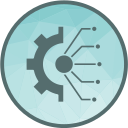Automation and AI in Business Operations: Build the Pace of a Modern Enterprise
Chosen theme: Automation and AI in Business Operations. Welcome to a practical, inspiring dive into how organizations are blending automation with AI to reduce friction, scale excellence, and free people for truly meaningful work. Subscribe to get field-tested insights, real stories, and weekly playbooks you can put into action.
From Manual to Autonomous: The New Operating Rhythm
Start by drawing the end‑to‑end workflow, not the org chart. Identify handoffs, delays, and error-prone steps. A logistics team once discovered three approvals doing the same check; one bot replaced them, halving cycle time overnight.
From Manual to Autonomous: The New Operating Rhythm
Treat AI as a teammate that drafts, predicts, and flags anomalies, while humans validate and decide. A customer success group used a classifier to triage tickets and a human-in-the-loop to approve escalations, cutting churn by a measurable margin.


Data Is the Fuel: Build a Trustworthy Foundation
Clean Data, Clean Outcomes
Invest in standard schemas, validation rules, and lineage tracking. A finance team added simple reconciliation checks to invoice feeds, preventing model drift and saving hours of manual corrections during quarter close.
Reusable Intelligence with Feature Stores
Centralize features like ‘days since last purchase’ or ‘average handle time’ so models share the same definitions. This reduces duplication, speeds experimentation, and keeps operations consistent across departments and regions.
Governance, Compliance, and Ethical Guardrails
Document data sources, access policies, and retention rules. Set bias tests and appeal routes for automated decisions. Invite legal and frontline staff to monthly reviews so governance feels collaborative rather than obstructive.

Intelligent Customer Support with Generative AI
Deploy AI to summarize conversations, draft responses, and surface knowledge articles. A mid-market SaaS company reduced response times by minutes per ticket while agents spent newfound time on proactive outreach, boosting satisfaction scores.

Predictive Maintenance and IoT Insights
Stream sensor data into anomaly detectors that forecast failure windows. One manufacturer caught motor issues days earlier, scheduling downtime during lunch breaks and saving thousands in rush shipping and emergency labor.

Finance and Back‑Office Automation
Automate invoice matching, expense classification, and variance explanations. A regional retailer used OCR plus rules and learning models to clear backlogs, cutting late fees and producing daily visibility for budget owners.
Architecture That Scales Without Drama
Use queues and schedulers to trigger tasks on real events, not cron prayers. This reduces brittle dependencies. One team moved to event streams and saw retries and alerting become predictable rather than chaotic.
Architecture That Scales Without Drama
Track versions, inputs, and performance. Shadow new models before switching traffic. When a forecast drifted after a vendor change, recorded lineage made the root cause obvious, enabling a same‑day rollback.


Citizen Automators and Low‑Code Empowerment
Give business users safe sandboxes with templates and guardrails. A procurement analyst built a vendor-onboarding flow in a week, then partnered with IT to scale it across regions without rewrites.
Prompt Crafting and AI Literacy
Teach structure: role, context, constraints, and evaluation criteria. A sales team created prompt libraries for proposals, reducing rewrites while preserving voice. Share your best prompt pattern in the comments for others to try.
KPIs That Matter to People
Track saved hours that return to meaningful work, not just headcount reductions. Celebrate error prevention, faster learning, and customer delight. Invite your team to nominate a monthly ‘automation win’ to spotlight progress.

Choose metrics that tie to cash and customer outcomes: cycle time, first-contact resolution, schedule adherence, and variance detection. Share targets openly so every contributor sees their work moving the needle.

Randomize where possible, or use staggered rollouts. Capture confounders like seasonality and staffing. One support team ran a split test on AI summaries and proved a significant efficiency gain without harming satisfaction.

When automations misfire, write blameless postmortems with clear actions. Turn fixes into checklists and templates. Over time, your library becomes a competitive advantage and a training ground for new builders.
